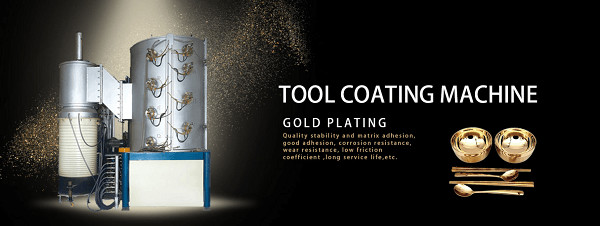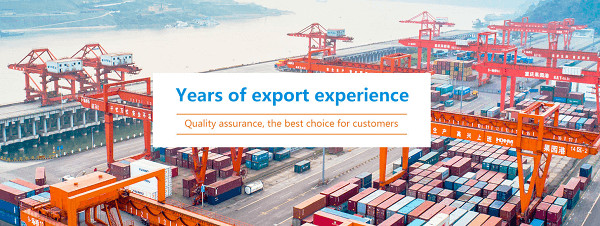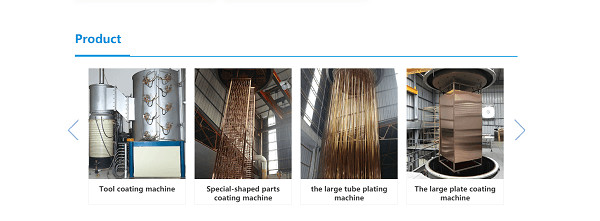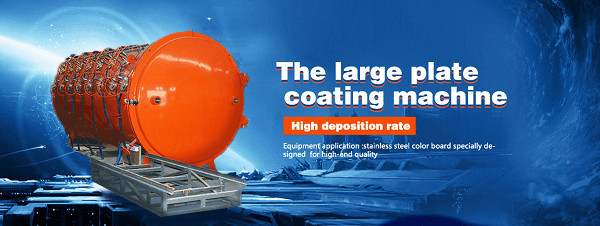70% are imported. How can Chinese industrial robots avoid chip tragedies?
Robot, the soul of industry.
However, few people know that Japan, a country close to us, has dominated the global industrial robot market for 20 years and has stuck the neck of countless industrial manufacturers. Once Japan cuts supply, a large number of industrial manufacturing will fall into a crisis of shutdown.
The top four companies in the robotics field are known as the "Four Big Families" in the industry: they are Japan's FANUC (FANUC), Yaskawa (Yaskawa), Switzerland's ABB, and Germany's KUKA (KUKA).
Together, these four families occupy more than 70% of my country's industrial robot market and nearly half of the world's industrial robot market with a rolling advantage.
In some high-end industrial robots, such as six-axis articulated robots used in high-end automobiles, chips, and electronics, the four major families even directly occupy more than 90% of the Chinese market, and domestic players have almost no resistance.
Among them, Japan alone occupies half of the seats of the four major families. Japan's FANUC (FANUC) became the world's first manufacturer to exceed 200,000 robots as early as 2008, and its market share ranks first in the world.
Since 2000, Japan has become the world's largest industrial robot producer and exporter with its strong R&D and production capacity of industrial robots.
In 2019, even under the dual influence of trade frictions and the severe epidemic situation, Japan's industrial robot exports reached 15.92 billion U.S. dollars, far surpassing other countries in Europe and the United States, and it is a veritable "super country" in the robotics industry.
In contrast, my country currently has only 140 industrial robots per 10,000 industrial workers, which is far lower than Japan's 327.
Even more frightening is that Japan also monopolizes the core parts and components produced in the upstream of industrial robots.
Take the precision reducer as an example. It is the main component of the robot joint, accounting for nearly 40% of the total cost of the robot. It is one of the most core parts and is known as the "jewel in the crown of the robot."
In this area, Japanese companies also have an overwhelming advantage.
The global reducer is monopolized by Japanese companies such as Nabtesco, Harmonic, SUMITOMO, and SHIMPO. Japanese companies dominate, and even the "four major families" have to purchase from Japan.
The reducer is the pinnacle of precision mechanical technology, and its technical threshold is very high. It is a masterpiece of materials science, precision processing equipment, assembly technology and other disciplines. It requires long-term experience accumulation, and there is almost no possibility of overtaking in corners. .
As the "soul of industry", the rise of industrial robots is closely related to Japan's powerful industrial manufacturing.
Japan is the third manufacturing powerhouse in the world to establish a machine tool industry after the United States and Germany. After the Second World War, the Japanese government vigorously supported local industrial manufacturing, strategically proposed to establish a country based on trade and technology, and tactically supported heavy industries such as steel, automobiles, electric power, semiconductors, and nuclear energy. It has long been the world's industrial power since 1982 camp.
vacuum coating machine,pvd coating machine,pvd vacuum machine,vacuum ion coating machine,multi-arc ion coating machine
In the late 1970s, the Japanese automobile industry began to experiment with industrial robots, and it entered a stage of large-scale popularization in the 1980s. The unified machine assembly line production allowed Japanese auto companies to rapidly expand their scale, while their costs continued to drop.
Today, the world dominance of Japanese car companies is obvious to all. The combined revenue of Toyota, Honda, and Nissan alone exceeds $100 billion. In 2018, the automobile industry accounted for 40% of Japan's industrial output value.
In the late 1970s, Japan's semiconductor industry rose strongly, its global share soared from 10% to 40%, and even attracted crazy suppression by the United States.
In the field of upstream equipment and materials of chip semiconductors, Japanese companies have an absolute right to speak. Among the 19 key materials in the entire semiconductor industry, 14 of which are monopolized by the Japanese industry over half of the global market.
Yaskawa, one of the four major families, is also the first robot company in the world to apply industrial robots to semiconductor production.
The fast-growing manufacturing industry is in sharp contrast with the severely aging Japanese society. Under the ever-increasing contradiction between labor supply and demand, Japanese industrial robots have risen rapidly and embarked on the road of dominance.
In 1970, with the gradual end of the post-war baby boom, the proportion of the elderly population over the age of 65 exceeded the 7% red line, and Japan entered an aging society.
However, at this time, Japanese society is experiencing an unprecedented high-gloss moment in history-the post-war economic miracle.
After the end of the Second World War, Japan's national economy suffered a fatal blow. Forty percent of the country's wealth was destroyed by the war, the economy was severely collapsed, and the society continued to be in turmoil.
However, the Japanese government seized the window of opportunity for a surge in international trade after the war, and set off an unprecedented wave of industrialization in the country. The well-off class of the people began to rise rapidly, and the economy took off in just over two decades.
From 1965 to 1970, the Japanese economy entered a period of super prosperity, with an average annual growth rate of industrial output of 16% and GDP growth of more than 11%. It surpassed Germany in 1968 and became second only to the United States and the former Soviet Union. The third largest country in the world.
This fabulous economic prosperity was given the name of a god by the Japanese people, and it was called "Izano Boom."
However, aging is like a bone gangrene, and Japan's industry is perpetually entwined.
In 1970, Japan's shipbuilding, televisions, and semiconductor radios all ranked first in the world; the output of steel, automobiles, fertilizers, and synthetic fibers was second only to the United States.
However, at this time, the number of working-age people in Japan was only 51.53 million, a year-on-year increase of less than 1%.
The surging industrial demand and the increasingly aging society have formed a huge labor gap, resulting in a continuous shortage of human resources in Japan's manufacturing industry and a rapid increase in costs.
vacuum coating machine,pvd coating machine,pvd vacuum machine,vacuum ion coating machine,multi-arc ion coating machine
At the same time, with the rapid rise of Japanese industry, the status of the "economic big brother" of the United States began to be threatened, and trade frictions between Japan and the United States continued to escalate.
In 1968, Nixon promised to suppress Japan's textile industry in the presidential election, officially kicking off the first trade protection war between Japan and the United States.
A large number of trade surpluses, an increasingly unfriendly trading environment, and the rapid appreciation of the yen, for various reasons have forced the Japanese government to re-examine its national positioning, formally shifting from "trade-based country" to "technology-based country", mentioning the importance of technological innovation An unprecedented height.
At this time, Japan began to vigorously introduce foreign advanced technologies. These technologies have gone through the process from copycat to innovation, from imitation to transcendence, and finally are gradually internalized by Japanese society and become the cornerstone of Japanese industrial innovation.
On the other side of the ocean, Unimation of the United States developed the world's first industrial robot in 1959. Its founder, Joseph Engelberger, is honored as the "father of robots" in the industry.
In 1969, through the introduction of Unimation's technology, Kawasaki Heavy Industries of Japan took the lead in creating the first industrial robot Unimate in Japanese history, creating a precedent for industrial robots in Japan.
At that time, the robots were still in the early stages of development. They were huge and heavy, and could only accomplish very simple tasks, and their indicators were not mature.
However, in the context of the extreme shortage of manpower in Japan, robots quickly entered the practical stage, and were the first to be used in the field of automobile manufacturing-the foundation of Unimation's fortune-and quickly expanded to machinery, electronics and other manufacturing industries.
The Japanese government has not been idle either. In addition to introducing a series of encouraging policies for industrial robots, in 1971 and 1978, the Japanese government quickly followed up and promulgated the "Electrical and Mechanical Services Law" and the "Mechanism Law", and took the lead in formulating and improving The industry standard of the robot industry has paved the way for the large-scale application of robots.
At the same time, Japan has not stopped at the introduction of technology. They have invested heavily in technology research and development. They not only established the world's first national robotics association, but also developed the world's first arc welding robot and the first SCARA industrial robot by themselves. , The first motor-driven robot and so on.
In 1980, Japan successively promulgated two system bills to stimulate enterprises to rent industrial robots, and the Japanese Ministry of Finance, Japan Development Bank, and 24 industrial robot companies led the establishment of the "Japanese Robot Leasing Company" to provide robot leasing and rental services to small and medium-sized enterprises. The loan brought the robot to the factories of major small and medium-sized enterprises in the industry chain.
Supported by a series of crazy tax cuts, subsidies, loan concessions, and system tilt, Japanese industrial robots ushered in the first wave of vigorous development. In 1970, the annual output of Japanese industrial robots was about 1,350 units, and in 1980 it increased to 19,843 units, with an average annual growth rate of more than 30%.
Under the wave of "technology-based nation", Japanese society is eagerly absorbing robotics technology. A large number of industrial robots such as Kawasaki Heavy Industries, Yaskawa Mechatronics, and FANUC have risen and quickly occupied the domestic market.
Since then, the Japanese robot industry has completely got rid of the restriction of "technology import", and the industry has ushered in a golden twenty years of explosive growth.
In 1982, the number of robots in Japan exceeded the 100,000 mark, and the number of advanced robots exceeded 56% of the world's total, far exceeding the birthplace of robotics-the United States.
After the 1990s, FANUC and Yaskawa Mechatronics have emerged as world-class industrial robot manufacturers. With the Japanese domestic market becoming saturated, Japanese robot manufacturers have begun to aggressively enter overseas markets under the active guidance of the government.
vacuum coating machine,pvd coating machine,pvd vacuum machine,vacuum ion coating machine,multi-arc ion coating machine
The space between the Japanese domestic market and the global market is very different. Soon, the Japanese industrial robots with high quality and low price, accurate and controllable, were recognized from all over the world, and orders flew like snow flakes.
In 2012, Japanese robot exports accounted for more than 70% of the total industrial sales, and the vast and rising Asian market has become the largest buyer of Japanese robots.
After 2000, Japan has grown into the world's largest robot country. It not only sits firmly on the leading position in the production and sales of robots, but also controls the upstream core components including reducers and servo motors. It can be described as Swordsman's robot arena.
With the continuous rise of China's economy, the Sino-US trade situation has deteriorated, the domestic fertility rate has fallen, the demographic dividend has gradually disappeared, and the labor costs of enterprises have continued to rise...
Everything is so similar to the former Japanese market.
In fact, China is facing a period of soaring demand for industrial robots similar to Japan in the 1980s.
Since 2013, China has been the world's largest market for industrial robots. In 2016, the total number of robot installations in China reached an astonishing number one in the world, with an unprecedented development speed.
However, the manufacturing capacity of industrial robots in my country is very backward. Not only is it "stuck" in the core technology and core components, the high-end robot market is close to a complete fall.
The reason behind this is also going back 40 years ago.
In 1977, when Japanese society was actively embracing robots, China on the other side of the Gulf had not yet taken the first step in industrial exploration.
At this time, one of the most critical figures in China's robotics industry, the future academician and the "father of Chinese robotics"-Jiang Xinsong, entered people's field of vision.
In 1977, many countries invested heavily in the robotics industry. Based on years of research experience in the Northeast Industrial Automation Research Institute, Jiang Xinsong keenly perceives that robots will surely become a symbol of national scientific and technological strength and industrial level.
At the Natural Science Planning Conference of the Chinese Academy of Sciences that year, Jiang Xinsong put forward the idea of developing robots and artificial intelligence for the first time, and then successively put forward important topics such as "intelligent robots in the ocean".
However, the "decade of turmoil" greatly hurt the vitality of the Chinese scientific and technological community. A large number of scientists have been persecuted, scientific research work has come to a complete standstill, and there is a shortage of people, money, and technology. It is not easy to talk about catching up with the international advanced level.
It was not until 1985, under the leadership of the chief designer Jiang Xinsong, that China produced the first underwater robot that could function normally, the Seaman One.
After eight years of hardship, the success of "Hairen One" not only marked a new stage in the research of China's robotics industry, but also greatly inspired the confidence of Jiang Xinsong and other scientists.
vacuum coating machine,pvd coating machine,pvd vacuum machine,vacuum ion coating machine,multi-arc ion coating machine
In March 1986, the robotics project was included in my country's "863 Program" (National High-Tech Research and Development Program), which opened the battle to the forefront of world science and technology.
In the days that followed, Jiang Xinsong was not only re-elected as chief scientist in the field of automation for the fourth "863 Program", but also led the team to overcome the gaps in my country's CIMS, special robots, intelligent robots and other fields; the editor-in-chief wrote the "Introduction to Robotics"; and Founded the publications of the Chinese Society of Automation "Information and Control" and "Robotics" magazines, and comprehensively promoted the development of my country's robotics industry.
In 1994, Jiang Xinsong was elected as the first academician of the Chinese Academy of Engineering. He died of a heart attack in 1997 at the age of 66.
To commemorate Jiang Xinsong, the largest domestic and world-class Xinsong Robot Company is named after him.
Today, my country's industrial robot industry has gone through forty years. Although there have been breakthroughs in some areas, the overall development has always been in a backward position.
With the continuous deepening of China's reform and opening up, my country's industrial manufacturing capacity continues to improve, and the demand for industrial robots continues to grow. Since 2013, it has been the world's largest market for industrial robots.
According to the data of Huachuang Securities, the current localization rate of industrial robots in my country is less than 30%, and the market share of leading domestic companies is less than 3%.
In terms of core components, about 85% of the domestic reducer, 70% of the servo motor, and more than 80% of the controller market are occupied by foreign brands. The high-end product line is completely lost and there are many blanks.
Li Yizhong, chairman of the China Federation of Industrial Economics and former minister of the Ministry of Industry and Information Technology, once sighed, "my country is now a big industrial country, not yet a strong industrial country; a big manufacturing country, but not a strong manufacturing country. We must clearly see the gaps and shortcomings. ."
Compared with Japan in the 1980s, we have too many similarities: American suppression, aging population, increased labor costs, industrial demand growth, long-term dependence on technology introduction...
The difference is that China's vast market space has given domestic robot manufacturers more development opportunities.
Under the huge wave of "domestic substitution", along with market demand generated by emerging industries such as new energy vehicles, chip semiconductors, and high-tech electronics, the domestic production of industrial robots in 2020 will reach 230,000 units, a year-on-year increase of 19.1%; December In a single month, it exceeded 29,000 units, a record high.
In the post-epidemic era, China, as one of the few countries that have been properly managed and successfully resumed work and production, ushered in a surge in manufacturing demand.
According to China’s Robotics Industry Investment Analysis and Prospects Report 2021-2025, China Investment Industry Research Institute, my country’s robot market will grow at a compound annual growth rate of approximately 15.80% in the next five years, and the market size will reach 146.3 billion yuan in 2025.
The vast world has a lot to do.
Founded in 2015,Zunhua Baorui Titanium Equipment Co.,Ltd. is a manufacturer specializing in pvd vacuum ion coating equipment. The company’s products mainly include large plate coating machine, large tube collating machine, tool coating machine and LOW-E glass production line. Mr.Wang baijiang ,general manager of the company ,has been engaged in vacuum coating industry for more than 30 years. He continuously improve production technology, improve product performance and devote himself to provide customers with better product experience and higher production efficiency.





